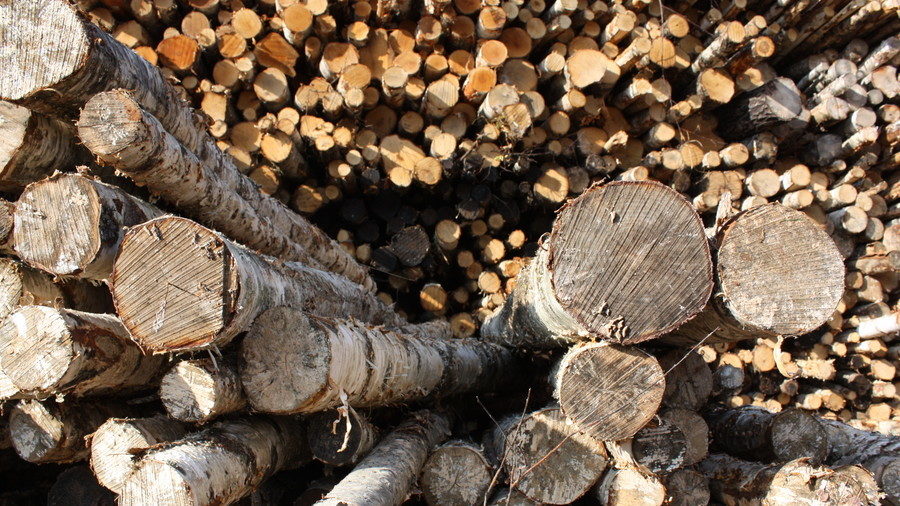
© Anne Kauranen / AFP
Scientists at the University of Maryland have fortified wood using a process which makes it 12 times stronger, producing a natural substance more durable than many titanium alloys and capable of stopping high-speed projectiles.
"This could be a competitor to steel or even titanium alloys, it is so strong and durable. It's also comparable to carbon fiber, but much less expensive," said Liangbing Hu, head of the research team at UMD's A. James Clark School of Engineering, in a
press release. "This new way to treat wood makes it 12 times stronger than natural wood and 10 times tougher."
The team of researchers boiled different varieties of wood in a caustic solution of sodium hydroxide and sodium sulfite for seven hours. This process removes some of the compounds that surround the cellulose in the wood, creating additional space within. They then pressed the block at 100 degrees Celsius for an entire day. This reduced the wood to one fifth its original thickness but increased its density threefold.
The technique crushes cellulose tubes that bind the wood together to the point where they interlock. It also removes the compound lignin, a type of polymer that binds the cellulose. This proved to be a crucial point in the development of the material as, if too much of the lignin was removed, the resulting material proved to be brittle and less dense than required. The team found the sweet spot was to remove approximately 45 percent of the lignin.
"It is both strong and tough, which is a combination not usually found in nature," said Teng Li, the co-leader of the team.
"It is as strong as steel, but six times lighter. It takes 10 times more energy to fracture than natural wood. It can even be bent and molded at the beginning of the process."The team battle-tested the new material to back up their extraordinary claims by firing bullet-like projectiles at five layers of the material laminated together (
in total measuring roughly three millimeters in thickness) with the same ballistic air gun used to test the resistance of military vehicles.
Whereas the "bullets" passed through natural wood with relative ease, they were stopped in their tracks by the new treated wood material."The paper provides a highly promising route to the design of lightweight, high performance structural materials, with tremendous potential for a broad range of applications where high strength, large toughness and superior ballistic resistance are desired," said Huajian Gao, a professor at Brown University who was not involved in the study, as cited by
Eureka Alert. "It is particularly exciting to note that the method is versatile for various species of wood and fairly easy to implement."
Where once steel was the go-to material in the construction or manufacture of buildings, cars and even airplanes, this revolutionary material may spark a green revolution for materials science and reshape the engineering world. The variety of species of tree that can be used to produce the material means that cost and environmental factors can be overcome across the globe with relative ease.
"Soft woods like pine or balsa, which grow fast and are more environmentally friendly, could replace slower-growing but denser woods like teak in furniture or buildings," Hu said.
While other researchers have explored similar methods, and have even stopped actual 9mm bullets fired from a handgun, the Maryland team's research has helped advance the case for a more environmentally friendly approach to modern engineering, while simultaneously reducing the cost.
Reader Comments
"The team battle-tested the new material to back up their extraordinary claims by firing bullet-like projectiles at five layers of the material laminated together ( in total measuring roughly three millimeters in thickness ) with the same ballistic air gun used to test the resistance of military vehicles
He's a sand live Oak, Quercus Geminata, and is about 19' in circumference at 4 feet above the ground, height of about 75 feet and a spread of branches about 130 feet. As these grow more slowly than your standard live oak (Q. virginiana) he's likely older than a similar sized classic live oak across my lake. (Our neighborhood's lake.) *
They say that tree was here at time of .signing of DOI.
So if we're going to have carbon debits and credits, I dare say I should start charging the city for the O2 he puts out. Great tree!
R.C.
So Quercus means oak. Alba means 'white'.
Albaquerque means... White Oak, eh? (Quercus Alba.)
RC